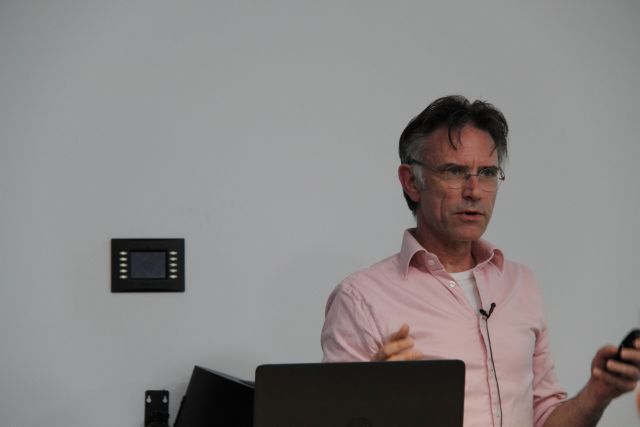27.03.2015 InvasIC-Seminar „Building, programming, and validating low-power heterogeneous multi-core image processors“
Dr. Menno Lindwer (Intel Corporation, Eindhoven, Niederlande) hielt im Rahmen der InvasIC-Vortragsreihe am 27.3.2015 zum Thema „Building, programming, and validating low-power heterogeneous multi-core image processors“ eine Präsentation.
Abstrakt
Imaging is the criterion of choice for mobile application processors (but also in automotive, print/imaging, digital cameras, and in-home security). Market data shows that buying decisions are driven by many factors which application processor vendors do not control, such as OEM branding, screen size and memory size. Next to those factors, buying decisions are primarily driven by image quality, and other imaging features, such as capture speed, video recording, face recognition, panorama modes, etc. This is the reason that the image signal processor solutions within mobile devices are currently among the largest silicon components. Despite the seemingly homogeneous requirements of pixel processing — after all, pixels are just parallel color channels — the actual processing requirements are not only extremely high, but also very diverse. Pixel processing algorithms are being developed at a very high pace. Sensor innovations cause decreases in pixel size, pixel rastering, and increase in noise levels. Many pixel processing algorithms require large 2D kernel fields, moving search spaces, and dynamic programming. All of these domain developments actually result in image processing solutions being highly heterogeneous, and with programmable operation throughputs at Tera-op level. Yet, these solutions need to fit the power budget of mobile phones. This means that that programming solutions need to perform two tasks which are typically conflicting: increase utilization level of silicon compute resources to above 80%, while at the same time increasing the number of imaging functions that can be brought to the market. The solutions to these conflicting challenges are found in a combination of highly heterogeneous and application-specific processor resources, fully compiler-driven hardware, static schedules, very aggressive compiler optimizations, automatic construction of optimized middleware layers, and rigorous testing at command interface level, rather than at register level.



